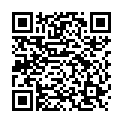|
|
|
| Module code: FTM-VFZG |
|
|
3V+1U+1P (5 hours per week) |
|
6 |
| Semester: 1 |
| Mandatory course: yes |
Language of instruction:
German |
Assessment:
Written exam (180 minutes)
[updated 04.09.2023]
|
FTM-VFZG (P242-0117, P242-0118) Automotive Engineering, Master, ASPO 01.04.2021
, semester 1, mandatory course
FTM-VFZG (P242-0117, P242-0118) Automotive Engineering, Master, ASPO 01.04.2023
, semester 1, mandatory course
|
75 class hours (= 56.25 clock hours) over a 15-week period.
The total student study time is 180 hours (equivalent to 6 ECTS credits).
There are therefore 123.75 hours available for class preparation and follow-up work and exam preparation.
|
Recommended prerequisites (modules):
None.
|
Recommended as prerequisite for:
|
Module coordinator:
Prof. Dr. Hans-Werner Groh |
Lecturer:
Prof. Dr. Hans-Werner Groh (lecture/exercise)
Prof. Dr.-Ing. Rüdiger Tiemann (lecture/exercise)
M.Eng. Michael Fries (lecture/exercise)
[updated 07.04.2021]
|
Learning outcomes:
H.-W. Groh: Image processing (1 V + 1 U/P)
After successfully completing this part of the module, students will be able to read out images from files, from video files, or from a camera, display them on the screen, and post-process them (e.g., convert them) as required.
M. Fries / TH. Heinze: GT-Power (1 V + 0.5 U/P)
After successfully completing this part of the module, students will be able to simulate the catalysts of internal combustion engines in terms of their flow behavior and pollutant conversion.
R. Tiemann: Introduction to multi-body simulation (MBS) based on the example of the automobile. (1 V + 0.5 U/P)
Today´s automotive development is characterized by the use of many calculation and simulation software tools. After sucessfully completing this part of the module, students will be familiar with the existing systems and how they work.
- Simulation methods
- Multibody simulation (MBS); contents, performance, limitations, providers.
- Designing vehicle models, use of control systems for longitudinal and lateral dynamics, e.g. ABS, TCS, ESC
- Virtual test drives
[updated 04.09.2023]
|
Module content:
H.-W. Groh: Image processing (1 V + 1 U/P)
- Introduction to the C++ programming language
- Introduction to the programming environment Qt + OpenCV
- Examples and your own programs for reading, analyzing and editing image files
M. Fries / TH. Heinze: GT-Power (1 V + 0.5 U/P)
- Creating the flow components and the catalyst block (monolith)
- Defining catalytic properties: surface (washcoat), loading (precious metals)
- Applying surface reactions
- Calibrating the model by means of experimental data
R. Tiemann: Introduction to multi-body simulation (MBS) based on the example of the automobile. (1 V + 0.5 U/P)
- Methods for simulating mechanical systems
- Setting up simulations with rigid multibodies (MBS)
- Identifying the performance and limitations of MBS
- SiL, MiL, HiL, ViL terms
- Introduction to the CarMaker software from IPG Automotive
- Structure of (partial) vehicle models
- Virtual test maneuver trials
[updated 04.09.2023]
|
Teaching methods/Media:
H.-W. Groh: Image processing (1 V + 1 U/P)
Lecture with practical exercises on the PC
M. Fries / TH. Heinze: GT-Power (1 V + 0.5 U/P)
Lecture with practical exercises on the PC
R. Tiemann: Introduction to multi-body simulation (MBS) based on the example of the automobile. (1 V + 0.5 U/P)
Lecture mit projector (video), practical exercises using the CarMaker (IPG) software, as well as demonstrations by IPG Automotive
[updated 04.09.2023]
|
Recommended or required reading:
H.-W. Groh: Image processing
- Ulrich Breymann: Der C++-Programmierer, 4., überarbeitete und erweiterte Auflage, Carl Hanser Verlag München 2015, Print-ISBN: 978-3-446-44346-4, E-Book-ISBN: 978-3-446-44404-1
M. Fries / TH. Heinze: GT-Power
- Manuals und Tutorials GT-Power
R. Tiemann: Introduction to multi-body simulation (MBS) based on the example of the automobile
- Adamski, D., Simulation in der Fahrwerktechnik, Springer Vieweg;
- IPG documents
- Course materials
- Rill, G., Schaeffer, T., Grundlagen und Methodik der Mehrkörpersimulation
- Shabana, A., Einführung in die Mehrkörpersimulation
[updated 04.09.2023]
|

